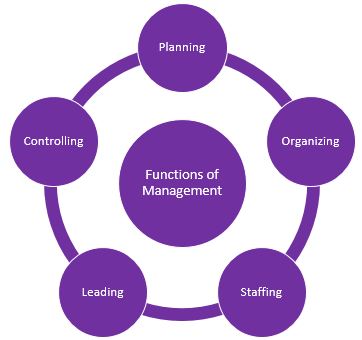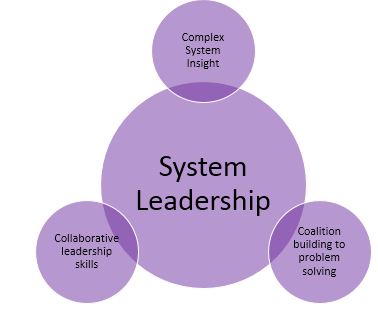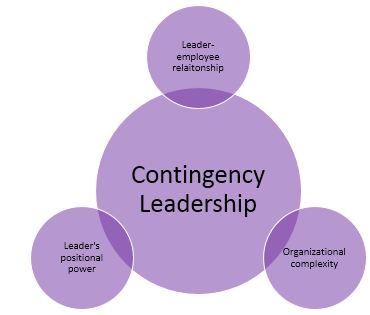Introduction:
Role of a leader and functions of a manager will be analysed in this report by applying in the selected organization. Managerial skills are a set of skills that enable a company to effectively run operational functions and employees who strive to attain corporate and business objectives. Whilst, leadership qualities help a company to envy visionary goals and strategically improves organizational performance and sustainability (Ejimabo, 2015). Managerial skills and leadership qualities are mandatory to achieve organizational objectives. This report has critically analyzed and evaluated the role of a leader and the functions of a manager. It has also evaluated how the roles of leaders and managers affected GE in terms of performance in the market. General Electric (GE) is an American multinational conglomerate which is involved in the power business, electronics business, aviation business, medical equipment, digital industry and capital businesses (General Electric, 2020). It employed about 205,000 employees globally. The company generated around $95.214b in revenue in 2019 in its 170 countries (General Electric, 2020). GE manufactures its products and services in total 38 countries at 284 manufacturing plants in 38 countries (General Electric, 2020).
You may feel interested to read below blogs:
Managers today must be able to manage change
Leadership Style of Richard Branson
Developing Individual Teams and Organizations
How to Manage a Project
Difference between the Role of a leader and the Function of a manager
Managerial skills vs leadership roles:
Management and leadership are not the same concepts. Management is about following the rules, structure and process of managing employees and operations of a company (Paliszkiewicz, Gołuchowski, and Koohang, 2015).

The figure demonstrates that management has a set of principles and processes such as functions of management which consist of planning, organizing, staffing, leading and controlling. These are established sets of rules and procedures that managers follow, and these are necessary to operate an organization. Additionally, a manager should demonstrate a set of skills such as planning, communication skills, decision-making, problem-solving, delegation, motivation etc. General Electric has a number of managers who are designated in many forms, such as the General Manager, regional manager or head of certain regional product divisions (General Electric-1, 2020). Their responsibilities are more like managing their regions and employees and less like leading the organization. However, managers of GE in all regions and sections play important roles in performing the functions and achieving the goals set by top leadership.
In contrast, Bratton (2020) argued that a leader is someone who influences people and followers in believing organizational vision and inspiring them to act in the direction to achieve the vision. The above definition implies that management is about doing things right following established procedures; whilst leadership is about doing the right things, which is often a leader’s artistic style. GE has a number of leaders who sit at the corporate office of the company, they perform different leading roles, such as Chairperson and CEO of the group, Vice President or CEO of a specific business unit etc. (General Electric-2, 2020). These leaders play the main role of making corporate vision and mission strategies to reach those missions.
Donate and de Pablo (2015) revealed that leadership and management cannot move isolated; rather, these two concepts need to merge and a company should be operated. Managers should cooperate with leaders to run the managerial functions and to lead the employees.
Managerial skills and leadership qualities in an organizational context:
Jack Welch was CEO at GE from 1981 to 2001 when the business went through a number of transformations under his leadership (Harvard Business Review-1, 2020). Jack revolutionized HR practices; among the strategies, he introduced candour approach to performance evaluation which evaluates the employees in open-minded. It enhances evaluation performance to a great extent. Jack also talked about and gradually removed management layers and bureaucracy, which slows down decision-making and operational activities in a company (Harvard Business Review-1, 2020). Jack realized that sharing best practices is important in a big company such as GE. He encouraged people and made a system where company-wide employees could share best practices. All these leadership and management capabilities helped Jack to create a heavy impact and sustainable business for GE during his tenure. Jack Welch took some very aggressive decisions of business expansion through business diversification. Under his leadership, GE acquired RCA Corporation in 1986 and NBC in 1987 (Britanica, 2020). RCA is a consumer product division, and NBC is a television network; both of them were new businesses for GE. The next year in 1988, Welch expanded the business to financial services 1988; this is again a new business portfolio for GE (Dow Jones & Company, 2018). Under the leadership of Welch, the new business portfolios were performing satisfactorily until his retirement in 2001 when business competitiveness and scenarios and the economy changed.
Jeff Immelt was assigned the CEO of GE in 2001 a few days before 9/11 attack in the US, so Jeff and his company GE went through a troubled economic and geo-political environment. During his time of 17 years, he undertook a number of leadership initiatives that transformed GE. With the leadership of Jeff, GE took a number of transformational actions in which they focused on core-industrial units while divesting low-tech and non-industrial business units (Harvard Business Review, 2017). Moreover, the company doubled the investment budget for R&D to bring breakthrough innovation and products to the industry. Another leadership philosophy by Jeff was that a company cannot be good simultaneously at media, insurance and engine making (Harvard Business Review, 2017). The insight of this message is that GE should emphasize on the core business of high technology rather than being an expert in all areas. This philosophy helped GE to focus on core strengths. GE divested from GE Appliances, NBC Universal, ad GE Plastics, which do not go with GE’s philosophy (The Washington Post, 2017). However, his advice and philosophy were not followed truly which is reflected by GE Capital, a loss-making entity of GE. Jeff made a number of wrong decisions: making acquisition high and selling low was one of them. GE acquired Alstom Power at high price and sold at a lower price, making a loss of $22b in 2017 (CNN Business-1, 2018). As a result of all these poor performances for years, the stock price of GE went down by 73% from 2016 to 2018 (CNN Business-1, 2018).
Henry Lawrence Culp joined has longstanding industrial experience apart from being a Senior Lecturer at Harvard Business School (American City Business Journal, 2020). He joined GE as CEO in 2018. Their charismatic leadership skills of Culp attracted other high-profile companies (such as Brain Capital, and T. Rowe Price Group Inc.) that invited Culp to keep engagement at their companies (American City Business Journal, 2020). Close ties with such companies help Culp to make better financial decisions at GE, which has been suffering financially in its turbine business. The transformational leadership capabilities of Culp are reflected in his activities in 2019 when the CEO decided to make a visit to its wind turbine blade manufacturing plant, which was never visited by a CEO since its purchase (Bloomberg Business week, 2020). The purpose of the such a visit was to encourage the employees of the business unit and to conduct a boot camp on Toyota Lean Manufacturing idea for the business unit of GE, which has been suffering in recent times (Bloomberg Business week, 2020). The above leadership demonstrations reveal that the objectives, for which the GE Board of Directors (BoD) decided to engage the company’s first-ever external CEO, started to achieve. The most troubled business unit started making profits: the profit of GE power increased by 71% in the second quarter of 2019, and overhead cost decreased by 10% at the same time. Moreover, the company decided to allocate around $8b as a pension fund for 20,000 employees (CNN Business, 2020).
Evaluating the role of a leader and functions of a manager
Jack Welch demonstrated truly visionary leadership capabilities by not only creating a vision but also making others believe in his vision. He excellently diversified the business to potential areas where GE hadn’t had businesses such as financial services, television networks, general appliances etc. This diversification generated huge revenue and food for global expansion. The result is reflected in the growth of the size of GE under his leadership. He transformed a $25b consumer manufacturing company into a $130b global conglomerate during his retirement in 2001 (Harvard Business Review-1, 2020). This is very much clear that GE experienced momentum and unprecedented growth during Jack’s leadership. Welch’s other initiatives, such as removing management layers, a candour evaluation system, and removing bureaucracy, added huge speed to the operational decision in GE. Slack, Chambers, and Johnston (2010) revealed that large corporations should have a flat organizational structure to help the company make a quick decisions. One weakness of Welch’s leadership is that he couldn’t develop the next leader who could maintain the status quo of the new business operations, such as financial services or television networks. As a result, these business units suffered after Welch’s retirement.
Welch’s successor Jeff Immelt leadership and management are completely different from those of Welch. Jeff emphasized core industrial businesses such as aviation, or medical equipment of heavy industry products; whilst he divested from NBC and general appliances, which were introduced by Welch. Jeff believed that a business could not be good in all areas. Rothaermel (2016) revealed that for growth, a company should diversify its business. On the other hand, Hill, and Hill (2017) argued that a company should expand the business where it has strategic advantages and capabilities. Based on the above argument and performance at the business units: financial services, NBC and appliances during Welch’s tenure; GE had capabilities of doing excellent business in the above areas. However, it didn’t get the right strategic leadership which is a failure of Jeff. Additionally, the whimsical decision of acquiring a company at a higher price and then selling low demonstrate poor visionary and managerial capacity. The stock price of GE went down by 73% in 2018 because of the poor leadership of Jeff (CNN Business-1, 2018).
It has only been around 2 years since Culp joined GE as a CEO. His involvement with high-profile companies will play a big role in GE sharing diversified experience and knowledge with GE employees. Culp is purely experience-oriented and he works to keep personal relations with employees regardless of their designations and status. This is the feature of a charismatic leader. Schedlitzki, and Edwards (2017) revealed that a truly charismatic leader keeps boundary-less contact and relations with employees regardless of levels for inspiration and motivating them to believe in his vision. Culp’s initiative of reducing overhead costs was much needed for GE to see profits. Culp genuinely understood the expectations of GE, and he is accordingly leading the company. However, it is far less than the exact time to evaluate his leadership.
Jack Welch demonstrated System Leadership Approach:
System leadership approach
The system leadership approach enables a leader to build an effective work environment in an organization where employees work at their best level by being able to see the complete scenario; being able to see others’ opinions about leadership; and following a co-creating approach to the future problem solving (Men, and Stacks, 2013).

The definition of system leadership and the above diagram imply that Jack Welch certainly followed this leadership style. Firstly because he forecasted the importance of financial services, the aviation industry, appliances, and medical equipment, his foreseeing capability has helped GE to strongly build the business portfolio that fostered GE’s huge growth. The system leadership approach helps a company to sustain itself strongly even the competitive environment changes (Herman, 2016). Thus, GE has been doing business proudly for more than 120 years worldwide. Secondly, system leadership emphasizes goal achievement both from individual and organizational perspectives (Men, and Stacks, 2013). The reflection is in the result of GE’s tremendous growth in Jack’s tenure, and GE has very low employee turnover because of their preferences and emphasized (Harvard Business Review-1, 2020). The most significant drawback of this approach is that inter-dependence and interpersonal relationship is not defined in this model (Ruben, and Gigliotti, 2017). This drawback was reflected in GE when the next CEO, Jeff Immelt, failed to continue the growth started by Jack Welch. This implied that interpersonal relationship and interdependence was not well defined in GE, and for this, the company performed really poorly in many non-industrial business units.
Jeff Immelt Followed Contingency Leadership Approach:
Contingency Leadership Approach:
Contingency leadership assumes that the effectiveness of leadership depends on contingent factors such as the employee-leader relationship, the complexity of the organization and finally, the positional power of the leader (Stacey, 2012).

Leadership features demonstrated by Jeff Immelt match with those of contingency leadership theory. Antonakis and Robert (2013) argued that a contingent leader tries to find the best way to cope with organizational complexity. The same happened in the case of Jeff in 2001. After the 9/11 attack, Jeff tried to cope with the completely changed economic landscape when he really performed well to get GE back on track. It is evident from previous research that Jeff failed to maintain the endless business units of GE. As a result, GE Capital, appliances and NBC were sold at low prices. Another element of the model: The leader-employee relationship was also degraded during his tenure and it was exposed when Jeff explicitly expressed his dissatisfaction over a number of employees in an interview with CNN Business (2020). An advantage of the contingency model is that it releases a lot of pressure from a leader, rather it emphasizes matching the role of a leader with the right-fit organization. Thus, a leader can perform his work freely. A potential drawback of this model is that it cannot suggest specifically the suitable approach to leadership. As a result, this theory rarely makes value to big organizations such as GE.
Culp followed Situational Leadership Approach:
Situational Leadership Approach:
A situational leader is someone who can evaluate the environment of a company and business competitiveness and can adapt the leadership styles to the business needs (Men, 2012). Culp has demonstrated situational leadership styles firstly because he is the first outsider-CEO to GE, and he came from a small company. Surely, he never had the experience of leading a big company such as GE. So, he adapted his leadership styles as per the businesses of GE demand. The greatest advantage of this model is that it is flexible and it takes the situation of employees into account (Metzger, and Rivers, 2014). As a result, employees of GE will be highly motivated, and they will work together to make GE a good performer again. However, Kolzow (2014) argue that a situational leader emphasizes short-term goals rather than thinking long-term. Culp must be aware that he doesn’t make the same mistake. Otherwise, the dream to raise GE’s stock price will be unattained.
Conclusion
Leadership and management should go simultaneously, and efforts to differentiate between management and leadership in an organization will result in trouble. It is believed that leaders should also play the role of a manager to ensure that tasks are achieved. GE is one of the most prominent US conglomerates which has a long history of more than 120 years. It went through different political and economic crises; after all, it survived and came back. Since 1981, the company has seen three leaders; among all, Jack Welch demonstrated the most sustainable leadership features, which transformed GE from a $25b company to a $130b company in 2001. The above report has found that jack’s successor Jeff Immelt made a number of controversial decisions for which, as found in the above report, GE has lost its attractiveness. Now GE’s investors are looking for charismatic leadership from the new CEO, Culp.
References:
American City Business Journal, 2020. 3 things to know about GE’s new CEO. Retrieved from: https://www.bizjournals.com/boston/news/2018/10/01/3-things-to-know-about-ges-new-ceo.html [Assessed on 24-May 2020]
Antonakis, J. and Robert, J., 2013. House (2013).’The Full-Range Leadership Theory: The Way Forward’, Transformational and Charismatic Leadership: The Road Ahead 10th Anniversary Edition (Monographs in Leadership and Management, Volume 5) (pp. 3-33). Emerald Group Publishing Limited.
Britanica, 2020. General Electric. Retrieved from: https://www.britannica.com/technology/electrical-and-electronics-engineering [Assessed on 27-May 2020]
Bratton, J. ed., 2020. Organizational leadership. SAGE Publications Limited.
Bloomberg Business week, 2020. GE’s Larry Culp Faces Ultimate CEO Test in Trying to Save a Once-Great Company. Retrieved from: https://www.bloomberg.com/news/features/2019-06-12/ge-s-larry-culp-faces-ultimate-ceo-test-in-trying-to-save-a-once-great-company [Assessed on 24-May 2020]
CNN Business, 2020. Inside the quest to save GE. Retrieved from: https://edition.cnn.com/2019/10/10/business/ge-larry-culp-ceo/index.html [Assessed on 25-May 2020]
CNN Business-1, 2018. Former GE boss Jeff Immelt reveals his biggest regrets. Retrieved from: https://edition.cnn.com/2018/11/15/business/ge-jeff-immelt-ceo/index.html [Assessed on 26-May 2020]
Dow Jones & Company, 2018. How Money Flowed (and Ebbed) at GE. Retrieved from: https://www.wsj.com/graphics/how-money-flowed-and-ebbed-at-ge/ [Assessed on 27-May 2020]
General Electric, 2020. Annual Report: GENERAL ELECTRIC COMPANY. Retrieved from: https://www.ge.com/investor-relations/sites/default/files/GE_AR19_10-K.pdf [Assessed on 24-May 2020]
General Electric-1, 2020. Business Executives: Business Executives. Retrieved from: https://www.ge.com/in/about-us/leadership/business-executives [Assessed on 24-May 2020]
General Electric-2, 2020. GE Corporate Executives: Business Executives. Retrieved from: https://www.ge.com/about-us/leadership/executives [Assessed on 24-May 2020]
Harvard Business Review, 2017. INSIDE GE’S TRANSFORMATION. Retrieved from: https://hbr.org/2017/09/inside-ges-transformation [Assessed on 25-May 2020]
Harvard Business Review-1, 2020. Speed, Simplicity, Self-Confidence: An Interview with Jack Welch. Retrieved from: https://hbr.org/1989/09/speed-simplicity-self-confidence-an-interview-with-jack-welch [Assessed on 26-May 2020]
Hill, A. and Hill, T., 2017. Essential operations management. Macmillan International Higher Education.
The Washington Post, 2017. GE’s CEO Jeffrey Immelt to step down after 16 years. Retrieved from: https://www.washingtonpost.com/news/on-leadership/wp/2017/06/12/ges-ceo-jeffrey-immelt-to-step-down-after-16-years/ [Assessed on 26-May 2020]
